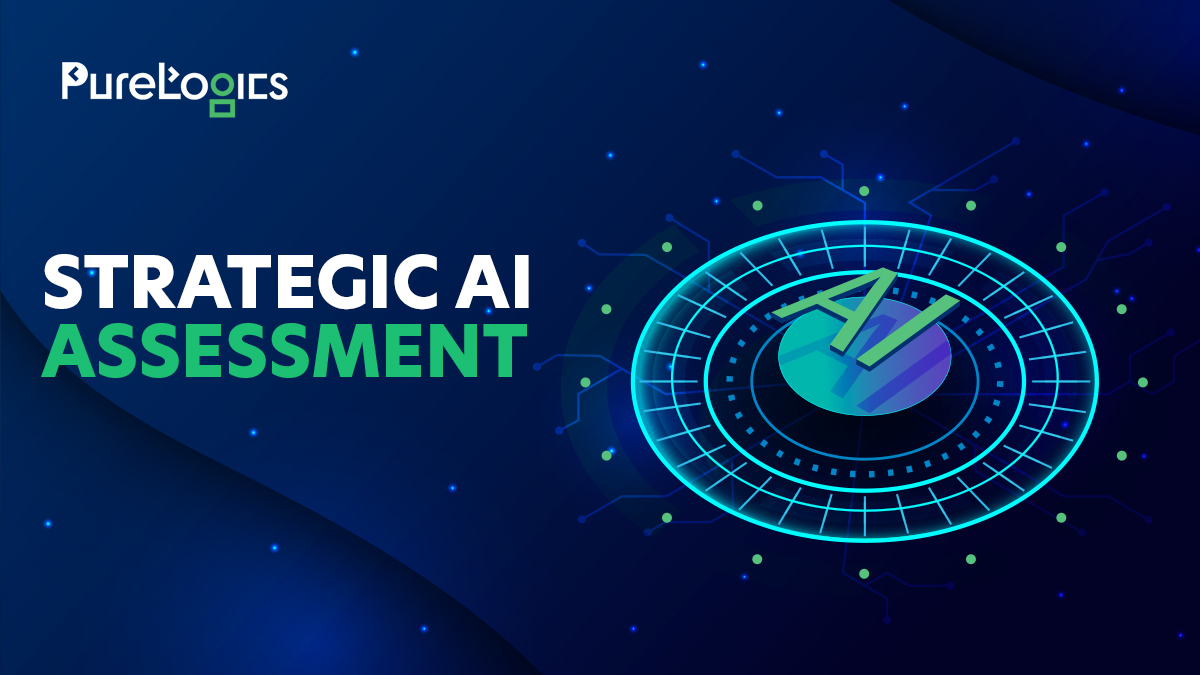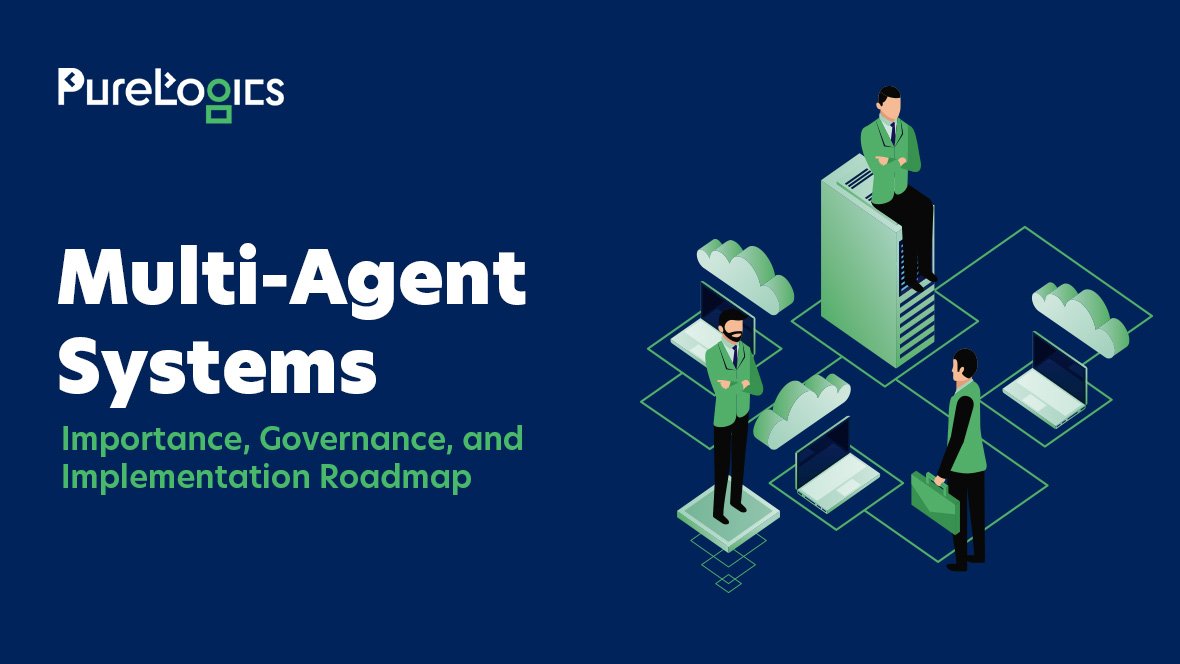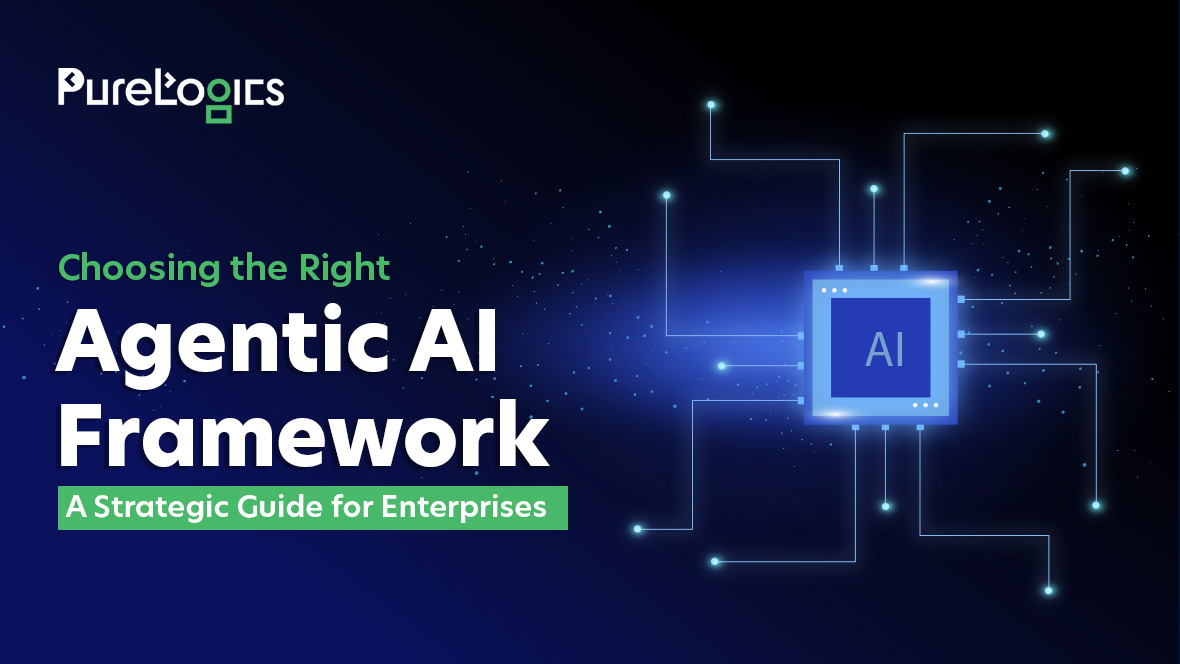Some AI initiatives save money and drive innovation – the rest waste organizational resources without any ROI. Implementing AI into all parts of the enterprise is essential to a business’s ability to get and maintain a competitive borderline. Companies have seen decreased expenses and increased revenue in the business areas where they’ve integrated artificial intelligence in the last few years.
AI can streamline processes, improve decision-making, drive innovation, and modify operations. However, a successful AI initiative depends on a company’s ability to choose the right project that always aligns with its strategic objectives and can provide tangible value.
Businesses around the globe have launched AI projects that either collapse before production or fail to give the desired outcomes. This high failure ratio of numerous AI initiatives undermines the need for companies to adopt a more systematic approach to assess these opportunities. At PureLogics, our analysis is based on two key factors: the value the team delivers and the ease of integration.
Contact Us Today
Get in touch to learn more about our services and how we can help you.
Assessing the Value of AI Projects
Recognizing the value linked with a potential AI task includes aligning an organization’s strategic goals and AI initiatives, understanding the possible price of not adopting AI in use cases, and estimating financial effects.
Before getting on an AI project, it’s essential to assess AI value and avoid wasting money on useless projects only because they are trendy. For example, with the growth of generative AI chatbots and tools, organizations jump into creating their variations and then battle to drive adoption and demonstrate value. However, enterprises can use a systematic approach like we do, first identifying areas of their company through a systematic approach and then building successful Gen AI tools.
What is the Financial Influence?
Estimating the financial influence of AI-driven projects is necessary to determine ROI and potential value. Organizations must use multiple methods like ROI calculations, scenario modeling, and expense-benefit analysis. It’s best to strike a balance between short-term profits and long-term potential.
For instance, with generative AI, businesses mainly focus on short-term expense savings by boosting automation. That return on investment is simpler to measure, but it’s complex to calculate the financial expenses associated with developing an advanced AI-powered project.
What are Opportunity Expenses?
Companies that need to leverage AI risk falling beyond competitors who include AI technologies to ensure productivity, new offerings, efficiency, and enhanced customer satisfaction.
When figuring out a unique AI project, you must ask, “How will this influence our competitors to be successful in adopting this? Would they get an opportunity to offer this at a minimum cost? Would they win market share? Will they get the opportunity to give unique offerings?”
This assessment is more essential than ever because generative AI services have made it possible for less AI-adept organizations to begin developing AI solutions instantly.
Does the Project Align with Company Goals & Strategy
AI projects consist of strategic goals that provide opportunities for innovation acceleration, cost reduction, and ROI improvements, positioning companies and transforming operations for sustained success in a constantly evolving marketplace. Focusing on the systematic organization goals, AI and business strategy lets executives budge to integrate numerous AI initiatives, even when other business units face cuts.
Complexity of Implementing AI Projects
The simplicity of implementation is crucial when measuring whether a specific AI initiative is valuable enough to implement within your organization. The more complex a project is to operate, the more expensive and prolonged it’ll be regarding executive expense, resources, time, project complexity, data quality & availability, and stakeholder investment.
Pre-built Tools
Utilizing off-the-shelf AI technologies and platforms can massively expedite the integration process, lowering developing time and reducing expenses related to custom development. The decision to use pre-built foundation models such as OpenAI’s GPT-4 compared to creating an exclusively large language model is straightforward for various organizations; the large number of data needed to build an ML model is restrictive, and the current tools are good.
Companies should evaluate the suitability of pre-built tools formed on a purchased versus build analysis. The main question is whether the issue your organization is trying to solve is essential to your competitive benefit. If that’s the case, you should build your domain’s tools. Otherwise, reasonable tools are already available on the market.
Data Quality & Availability
Sufficient access to high-quality and relevant data is crucial for AI model training, verifying results, and securing meaningful insights. Without high-quality data, most resources and their effort will be spent cleaning and preparing data, reducing project success rates.
Data readiness must be measured based on the ability to offer an appropriate signal to the issue and to operate precisely in a production environment.
Data scientists sometimes filter data and create an ML model to predict a fundamental result in a testing environment precisely. However, after deployment, ML engineers may find issues, including data coming in various intervals, missing data, or unavailable data that are required.
Stakeholder Investment
The capability to engage all stakeholders and build the company’s buy-in is essential to streamline AI implementation. The value linked with an AI project will most likely come from the enterprise’s process changes in AI modeling. For instance, if data scientists can build a precise pricing model, business executives should be able to take instant actions depending on the model.
They will be required to ensure the organization can find risk from model-based cost, operationalize robust pricing, and train managers and sales representatives to leverage the model within negotiations. Supportive stakeholders can make complex organizational changes seem easy.
Technological Feasibility
Evaluating the technological feasibility of any AI project includes understanding the technical needs, supporting infrastructure, and limitations. Companies should assess factors like computational resources, software compatibility, data storage abilities, and security measures to ensure that AI initiatives can be integrated seamlessly and effectively.
It’s possible to evaluate complexity in numerous ways, from required AI models to the business dimensions required to ensure value. There’s a lower chance of success when complicated AI initiatives require more resources, especially if you fail to adapt or change to the new process.
A Practical Framework for Measuring AI Opportunity
After thoroughly considering all these factors, the next move is to classify AI projects into quadrants depending on the ease of implementation and potential value. This effort helps companies prioritize projects that provide maximum ROI and are most likely to deliver successful and on-time projects. The four significant quadrants are:
Easy Value
Easy initiatives without any substantial organizational upside.
Low Value
Projects that implement and provide immediate AI value to the enterprise instantly.
Money Traps
A challenging and long project that can’t validate the investment.
Moonshots
These tasks can bring substantial value to the company but will also require considerable investment.

Advancing with your Company’s AI Initiatives
Projects that offer easy value should be prioritized, but putting the entire focus in one quadrant is considered shortsighted. While following these initiatives, you must look into your company’s moonshots to know what makes such projects more complex. Based on our experts, the biggest roadblock is “data.” That’s why you should ask yourself: Will improving a few data sources give back long-lasting value and unlock significance?
The prosperous integration of AI into organizational operations is key for businesses looking for a competitive edge today. However, the high inadequacy rate of AI projects demands a systematic & strategic approach to prioritizing and choosing initiatives.
PureLogics’ approach of balancing ease of implementation and value ensures that quality AI initiatives are discovered and successfully deployed while securing steady executive buy-ins and maximizing return on investment for ongoing AI projects. Want strategic deployment of AI for your company’s sustained growth? Give us a call today!
Contact Us Today
Get in touch to learn more about our services and how we can help you.


 [tta_listen_btn]
[tta_listen_btn]
 June 24 2024
June 24 2024






